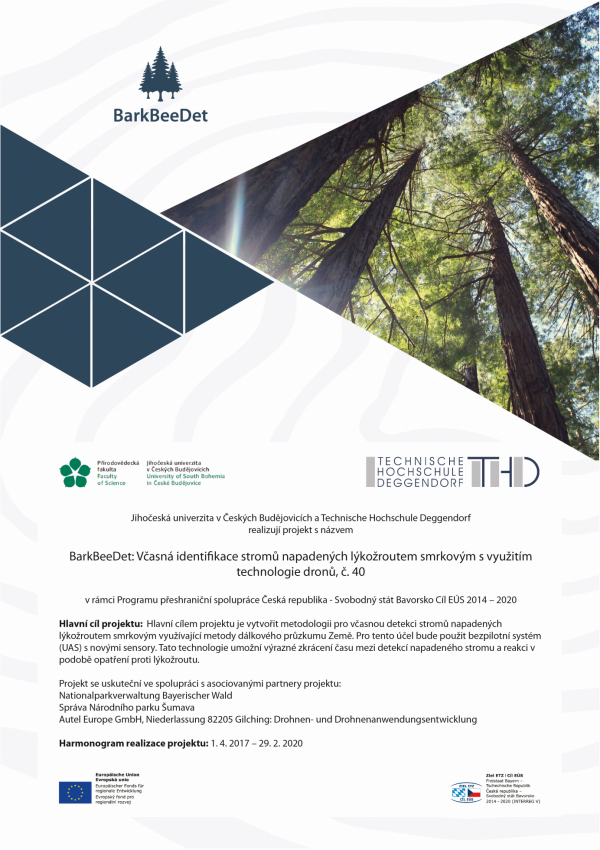
Katedra informatiky
BarkBeeDet
Throughout the Northern Hemisphere, damage caused by the spruce borer represents a large-scale economic problem. Before the attack by the spruce borer becomes visible, a new generation is already formed and there is a high risk of gradation of spread. The consequences of such gradation of spread are easy to understand from the current situation in the higher altitudes of the Bavarian Forest and Šumava National Parks. Early detection of infestation by the spruce weevil is currently only possible with the help of expensive and demanding ground observations. Various investigations confirm the urgent need to find an effective method for the early detection of the overpopulation of the spruce weevil.
Most of the previous solutions to the given problem using Earth remote sensing methods were unsuccessful due to:
- Insufficient amount of ground reference data
- Lack of high-resolution data at a given time
- Small data scales and the mixed pixel problem.
In this project, a methodology will be developed for the early detection of trees attacked by the lycophagus with the help of unmanned aerial systems (UAS = drones). Thanks to this, current sensors from the field of remote sensing will be used. By testing the data of different scales (the "upscaling" method), the scale of the data will be analyzed at which it is still possible to detect the impacts of the spread of the spruce budworm. This will be the basis for the practical use of the developed methods on the largest possible territory with the help of aerial vehicles.
For the development of the methodology, different study areas in two national parks are selected in such a way that the maximum possible variability of the conditions of occurrence of the spruce hornbill can be considered. By researching the issue in the territory of national parks, it is possible to consistently include the entire development of the attack by the spruce weevil without human intervention. The development of the spruce borer infestation and its individual phases will be captured using large-scale data (high spatial resolution) with a wide range of the electromagnetic spectrum (high spectral resolution) and very frequently (high temporal resolution).
The acquired data will be intensively investigated using remote sensing methods. As a result, a workflow will be demonstrated for the early detection of spruce bark beetle infestation using unmanned aerial vehicles. This also requires taking into account information about the required time and scale of the images, spectral range (sensors), spectral resolution and the way the data is evaluated. As part of the project, relevant data will be collected in the national parks related to the individual stages of attack by the spruce weevil. The data is primarily used for the development of a methodology for the early detection of infestations by the spruce weevil and will be freely accessible to the public. They can be used for subsequent research and development. The developed methodology will be published in the form of a publication and a public workshop.
